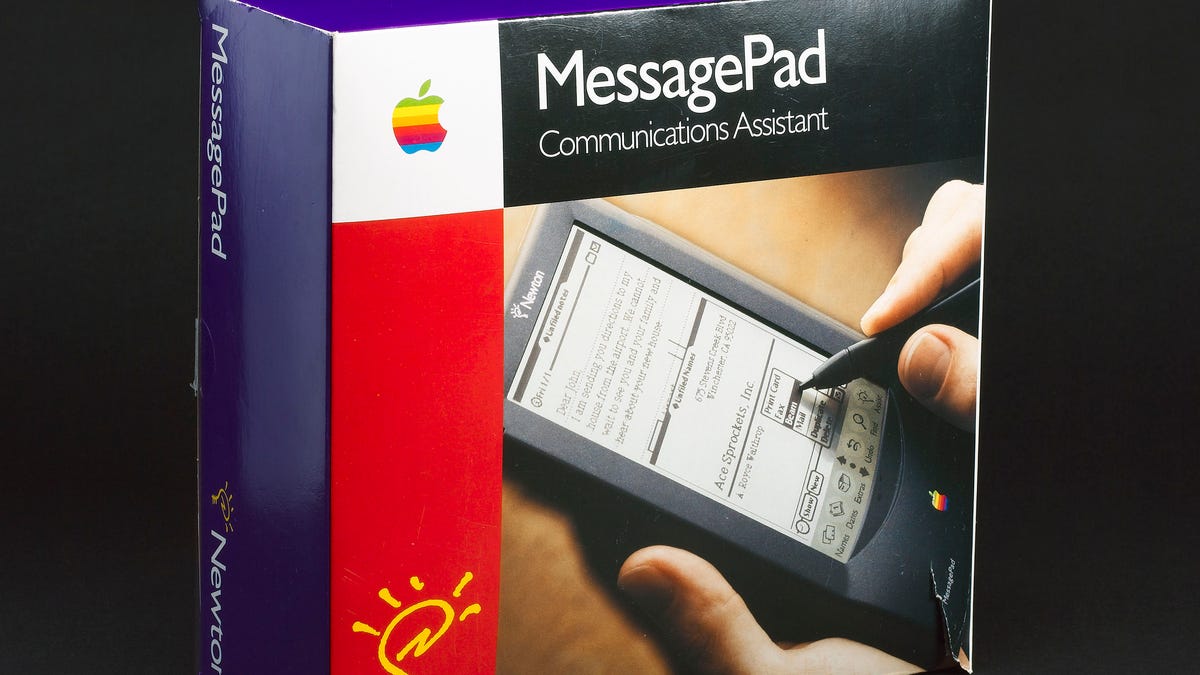
With this injection of resources, Apple, Acorn, and Acorn’s chip partner VLSI spun off the chip division into a new company called Advanced RISC Machines and created the ARM610 CPU that would power the Apple Newton.
Eventually, these elements came together to form the Apple Newton platform, which was first revealed to the public at CES in 1992 to much fanfare.Though some of its components would later be adopted by the iPhone, the Newton was a commercial failure until it was killed off in 1998 by a returning Steve Jobs who famously hated the device?
What to learn more about the history of Apple Newton.The Pippin had a short but fascinating history, starting as a way for Apple to expand into the multimedia market and ending as a failed gaming console created by Bandai.The console flopped, and apart from a small license deal with Norweigan company Katz, Apple found no other suitors.There were three main reasons why the Pippin failed: it launched at $600 (more than $1,000 today!), there were few compelling games to play (especially in the US), and Sony, Sega, and Nintendo already had a stranglehold on the market.
Released in 2010, Ping seemed to be an immediate success, with Apple claiming 1 million users within the first 48 hours.
Released to celebrate the 20th anniversary of Apple Computer, the Twentieth Anniversary Macintosh, better known as TAM, was a technical showcase packed with the latest technology.Not exactly meant for mainstream consumers, the computer was a luxury item unlike anything else Apple had released up to that point.
The TAM had an awkward flat shape with computer inputs and a CD drive on the lower half and a 12.1-inch active-matrix LCD display on the top.It was meant to be the ultimate all-in-one: a computer, a TV (with a built-in tuner), and a radio (with an FM tuner).
As for the computer components, the TAM had a PowerPC 603e CPU running at 250MHz, two RAM slots for up to 128MB, a 2GB storage drive, and ATI 3D Rage 2 graphics.
The TAM failed due to a familiar problem: it was too damn expensive.The story of Apple’s most widespread modern technology failure began in 2015 when the company released the 12-inch MacBook with a keyboard that used low-profile “Butterfly” switches.Using a new keyboard mechanism on the MacBook made sense–Apple needed to reduce the size of certain components to accommodate the diminutive size of the 12-inch notebook.Despite the criticism, Apple stuck with it, later bringing Butterfly to the MacBook Air and MacBook Pro.
It wasn’t until 2020 with the release of the new MacBook Pro 16 that Apple started phasing out the Butterfly–long after the reputational damage was done.
The Apple III (styled as apple ///) was a commercial failure that put Apple in a difficult position in its early days!It also needed to run existing Apple II software.
The goal was to win over the commercial sector and gain 90% of the market, effectively phasing out the Apple II.The Apple III was the first computer not built by Wozniak, who wrote in his 2007 book iWoz that the Apple III failed because it was “not developed by a single engineer or a couple of engineers working together.What makes AirPower such a fascinating failure is that Apple teased this product to the public, something the company would only do if it were confident about bringing it to market.
The moment Apple wishes it could take back occurred on September 12, 2017, during the launch of the iPhone 8, iPhone 8 Plus, iPhone X, and AirPods charging case.Apple wanted to join in on the fun by releasing the wireless charger to rule them all: a pad that could simultaneously power three devices—say, a phone, wireless earbuds, and a smartwatch.
Before the wireless HomePod and HomePod mini, Apple released a room-filling speaker called the iPod Hi-Fi.
Apple needed to make some major overhauls to snatch attention away from the upcoming Windows 95 OS, which flaunted modern multitasking and dynamic memory allocation.
Designed by Jonathan Ive, the Power Mac G4 Cube was a miniature desktop suspended in an attractive acrylic housing to give the illusion of a floating computerThe reason for its failure was simple: the cube didn’t provide the power or features one would expect for the priceApple admitted sales for the Power Mac G4 Cube were lower than expected
